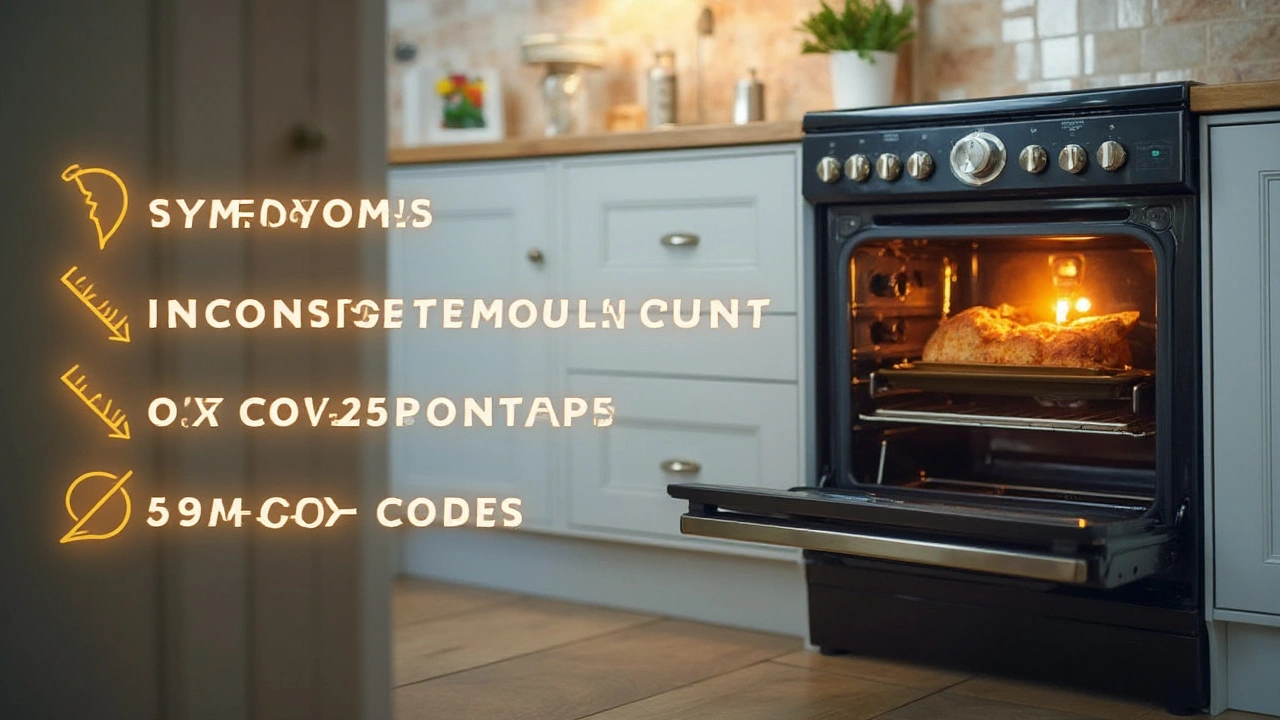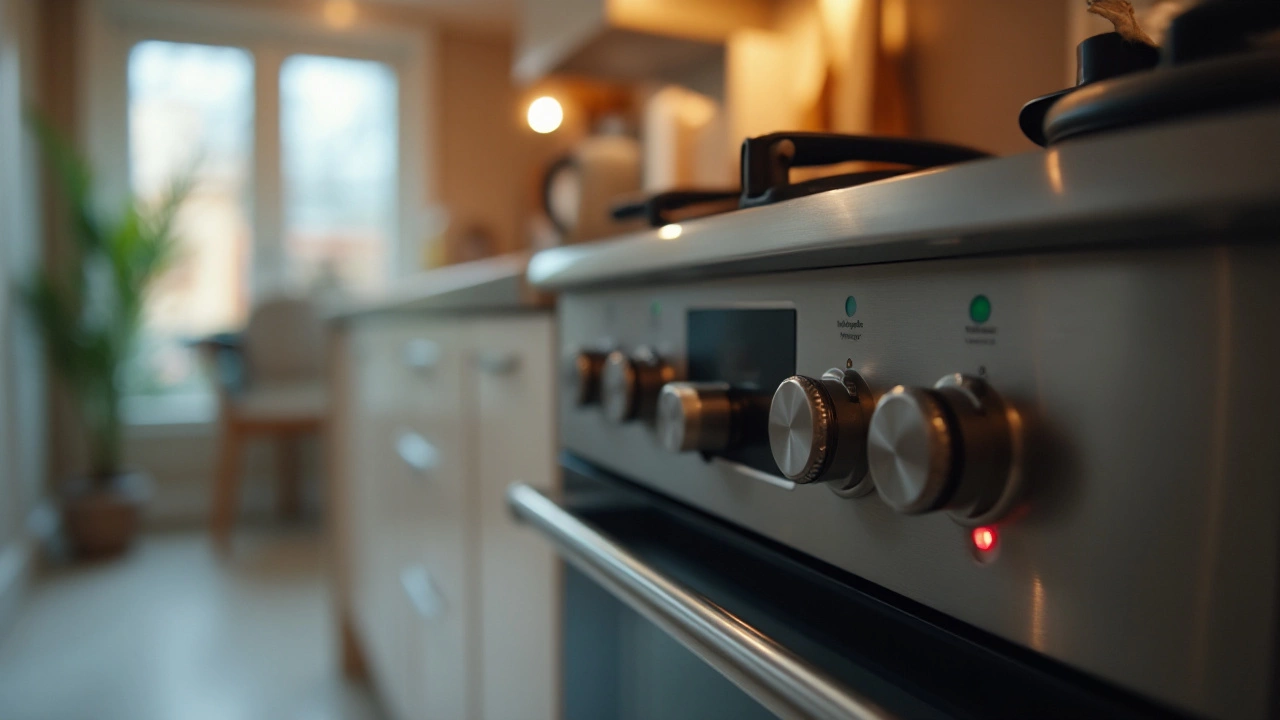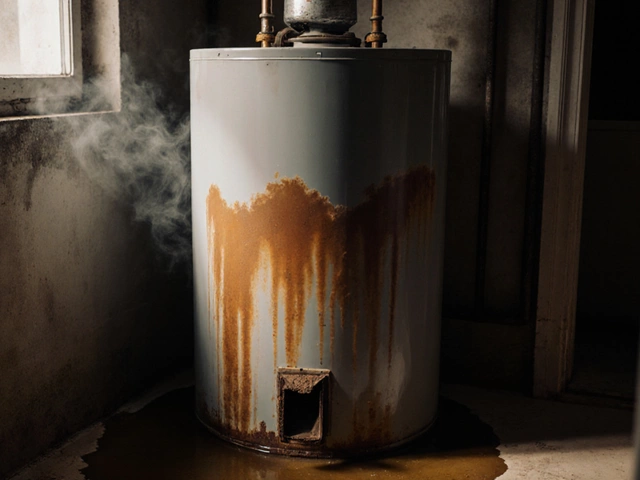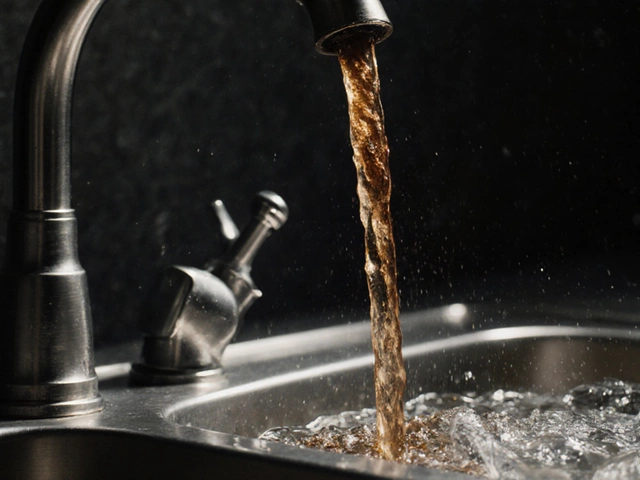Electric ovens are a staple in modern kitchens, and their control boards act like the brain to ensure everything is in rhythm. When these components falter, it can disrupt your cooking plans and cause quite the headache. Knowing how to spot signs of a faulty oven control board can make a difference in how quickly you can address the issue. In this article, we delve into the tell-tale symptoms and offer advice on how to tackle potential problems.
From unexpected beeping sounds to unresponsive controls, these quirky behaviors could indicate a malfunction somewhere within your oven's control system. By providing insights into how these issues manifest, you can feel more prepared when confronting them. Remember, sometimes a little troubleshooting can help you determine whether you need a full-blown repair ordeal or possibly a simple fix to get your oven humming again.
- Understanding the Role of the Control Board
- Common Symptoms of a Faulty Control Board
- Performing Basic Troubleshooting Steps
- When to Consider Professional Repairs
- Preventative Tips to Avoid Future Issues
- Frequently Asked Questions
Understanding the Role of the Control Board
In every electric oven, the control board serves as the maestro orchestrating the symphony of heating, timing, and temperature regulation. Much like the CPU in a computer, it manages a variety of functions, interpreting your input settings and converting them into action. If you've ever wondered why your dinner bakes to perfection, thank the control board that's behind the scenes directing the performance. Without it, you'd be left with unpredictable cooking results, which can be both frustrating and wasteful.
The complexities of an oven's operations revolve around the commands issued by the oven control board. It's the central processor interfacing with various components like the heating elements, timers, and even the digital display. By sending variations in voltage to specific areas, it ensures that your cookies are baked at 350°F, not 500°F. When this board fails to communicate effectively, the result could be anything from an oven that won’t heat up at all to one that won’t stop heating. Understanding this interplay is crucial for anyone eager to maintain their appliance's efficiency.
Are you aware that the majority of electric ovens today use microprocessor-based control boards? These sophisticated systems are designed to handle complex programming that allows your oven not only to heat but also to provide a variety of cooking modes. A recent study showed that approximately 60% of oven malfunctions trace back to control board issues. Addressing these problems requires a combination of understanding, patience, and often the consult of a professional should things get too tricky.
"Just like any other technology, oven control boards are susceptible to wear and tear. Ensuring you're familiar with its role can save you a lot of time and frustration," explains John Smith, a well-respected appliance technician.
This means regular use, especially in homes where the kitchen sees daily activity, can lead to these boards potentially breaking down over time. Components like capacitors and resistors within these boards can degrade, influencing the entire cooking process. Finding and addressing these issues can require a keen eye and sometimes involves trial and error. The more you learn to recognize early signs from your oven, the better equipped you'll be in extending its lifespan.
Common Symptoms of a Faulty Control Board
Have you ever set your oven to preheat, only to find it stubbornly staying lukewarm? Such woes might point to a malfunctioning or bad oven control board, a critical component in any electric oven. This board is responsible for regulating temperature, managing safety locks, and coordinating those beautifully timed beeps that signal your meal's readiness. When the control board fails, it can turn dinner prep into an unexpected ordeal.
One of the primary indicators of a problem is when the oven doesn't heat at all or fails to maintain the temperature. This can happen if the control board sends incorrect signals. When an oven keeps shutting off on its own or if you notice error codes dancing on the display, it could mean trouble with the control board itself. Another signal of distress is when the electronic display flickers or goes entirely blank, leaving you without a means to adjust settings properly.
People often overlook how auditory clues can hint at issues too. Unusual beeping or ticking from the control panel might be its way of crying for help. The continuous beeping not only tests your sanity but also highlights potential programming or circuitry problems. In some situations, you might notice particular hardware functions, like the oven light or self-cleaning feature, going rogue or not responding at all. Such quirks are not only irritating but indicators that the heart of your oven—the control board—is struggling.
In rare cases, a defective board can even emit a burning smell, posing a safety hazard. Now, if we've sparked your interest, let’s take a look at some statistics: A recent survey of appliance repair technicians found that nearly 30% of oven issues are linked to faulty control boards. This suggests a significant number of homeowners risk misdiagnosing issues because they don't recognize these signs. Remember, addressing these problems early can prevent costlier repairs in the future.
"Understanding how your oven works can save you time and money," says Lisa Thompson, a renowned appliance expert. "When something's awry, trust the signs, and act swiftly."
Clearly, reading the signs is half the battle, and keeping an eye—and an ear—out for these symptoms could save you a fortune. If you notice any of these symptoms, consider calling in the experts sooner rather than later, as their experience can swiftly identify whether it's the control board that needs attention.

Performing Basic Troubleshooting Steps
Detecting an issue with your electric oven can feel daunting, but walking through a series of troubleshooting steps can sometimes lead to a resolution without the need for professional intervention. Before diving into complexities, ensure that your oven is safely unplugged. Safety should come first, and a powered off appliance reduces the risk of electric shock significantly. Once secure, observe your appliance for obvious physical damage or anomalies. A visual inspection can often highlight frayed wires, visible residue, or other signs of wear that may be the root of the issue.
When the oven control board itself shows signs of failure, such as an unresponsive display or random error codes, it’s a good idea to reset the unit. Many appliances benefit from a simple power cycle: disconnecting the power, waiting a few minutes, and reconnecting. This can clear minor software glitches that could be causing the issue. If this direct reset does not help, it could be beneficial to look into more specific error codes. These codes, often displayed digitally, can point more precisely to what's malfunctioning.
Sometimes, issues may originate from the sensors or thermostat rather than the control board itself. Use a multimeter to test connections for continuity to ensure the wires are functioning correctly. If you’re hearing constant beeping sounds yet the display is unhelpful or unreachable, it might indicate a failure in reading temperature settings or modes. It's estimated that up to 30% of all oven control board issues are sensor-related as opposed to the board itself malfunctioning.
"Most appliance problems can be boiled down to faulty components or a glitch in the software," states Martha Jenkins, a well-versed appliance repair author. "Before ruling out a part as defective, a good amount of probing through the hardware's integrity proves beneficial."
If during these troubleshooting steps, accessing the control board becomes necessary, make sure to document where each wire and connector was placed. Taking a photo can aid in reassembly later on, keeping the process stress-free. Be meticulous about which screws and fasteners belong to each section. While opening up your appliance, double-check all wiring and connections to ensure nothing appears loose or misaligned.
For those eager to tackle the task head-on, here are some key steps:
- Review the appliance’s manual: Many come with error code directories and troubleshooting tips specific to your model.
- Inspect all door seals for damage: Misalignments create heating inefficiencies.
- Check harness connections: Loose or corroded connections may also cause these disturbances.
- Test electrical outlets: Confirm they supply power properly and consistently.
Remember, this isn’t a race. Take your time in the troubleshooting stages to avoid unnecessary complications. However, if after performing these steps your electric oven still displays erratic behavior, it may become a matter best referred to professional repair services. Addressing the problem early can forestall more serious issues later, keeping your kitchen functional without the hassle of extended downtime.
When to Consider Professional Repairs
Finding yourself in the middle of a kitchen disaster with an oven control board acting up can be quite distressing. Even for the most confident DIY enthusiasts, there comes a time when it's best to call in the experts. An electric oven is a complex piece of machinery, filled with delicate electronics that require precise handling. If you notice your oven frequently displaying error codes, failing to maintain temperature, or the digital display simply isn’t working, those are strong indicators that professional repairs should be considered.
Repair technicians have specialized tools and equipment to accurately diagnose issues and solve them efficiently. Unlike the hit-and-miss approach that might come with DIY efforts, professionals bring years of experience to the table. They can address underlying problems that might not be visible to an untrained eye, such as faulty wiring or components that are nearing the end of their life. A skilled technician may also be able to save you from spending money on purchasing new parts that may not be necessary. According to a 2023 study by the Appliance Repair Association, professional repairs extend the average lifespan of an oven by up to 35%, a statistic that might pique the interest of any budget-conscious homeowner.
There's also the element of safety to consider. Electric ovens involve both high-voltage electricity and the potential for fire hazards if things go awry. A small oversight or incorrect repair could result in much larger issues, including safety risks. This is especially important if you're dealing with problems such as sparking, smoke, or acrid burning smells. In such cases, it's vital to prioritize safety and let a professional handle the repairs.
“Sometimes, recognizing your limits can be as valuable as the technical knowledge itself,” notes Laura Pierce, a well-regarded appliance repair specialist with over two decades of experience.
If after conducting basic troubleshooting your oven refuses to cooperate, it's a sign that more serious intervention is required. Time is also a factor; often a professional can perform the repair far quicker than an inexperienced individual, allowing you to enjoy homemade meals without a long interruption. Not to mention, professional services may come with warranties that cover further complications, giving you peace of mind.
When deciding whether to attempt repairs yourself or to hire a professional, consider the complexity of the issue, your own comfort and skill level, and the potential implications of a misstep. When in doubt, investing in professional expertise could save you considerable time, expense, and maybe even your oven in the long run. Making an informed choice can keep your kitchen functioning and safety assured.

Preventative Tips to Avoid Future Issues
Ensuring that your oven's control board operates without hitches is all about adopting a mindset of regular maintenance and attention to detail. An often overlooked practice involves routinely checking the insides of your electric oven for any signs of dirt or grease buildup. These substances might not seem like a big deal, but they can eventually become a catalyst for functionality issues, particularly affecting the control board over time. Focus on cleaning your oven’s interior at least once every few months, using non-abrasive solutions to clear away potential contaminants that might somehow trickle into electronic compartments.
"Neglecting the basic cleanliness of an oven is like asking for trouble. Regular maintenance is the unsung hero of longevity," says Elizabeth Hayes, a well-regarded home appliance technician.
It also pays to occasionally inspect the exterior control components. If the tactile buttons or dials feel loose or glitchy, it’s often best to resolve this promptly by tightening what you can or replacing malfunctioning parts before the issue turns into a larger problem on the control board. One might think of this task as akin to maintaining a car; grubby spark plugs can eventually lead to larger mechanical dilemmas if not addressed when they’re only minor inconveniences.
Strategic Use of Oven Settings
Proper usage of your electric oven's functions can indirectly preserve the health of its oven control board. Avoid over-relying on self-clean cycles, as they generate excessive heat that can strain electrical components and shorten their lifespan. Should you need to employ this feature, do so sparingly and consider manually cleaning stubborn grime with safer cleaning agents instead. Knowing which oven functions to use, and how often to use them, can extend not just the life of your control board but the entire appliance as well.
Finally, keep an eye on electrical inconsistencies. Sudden power surges from lightning storms, albeit uncommon, can wreak havoc on electronic appliances, including ovens. It’s widely advocated to install a surge protector for your oven, especially in regions prone to erratic weather patterns. This small utility can be a wise investment safeguarding your oven’s control components, providing peace of mind and operational stability.
| Common Practice | Benefit |
|---|---|
| Regular Cleaning | Prevents grime buildup |
| Button and Dial Checks | Avoids mechanical wear |
| Sparingly Use Self-Clean Function | Reduces unnecessary heat exposure |
| Install a Surge Protector | Protects from power surges |
Frequently Asked Questions
Sorting out which component of your oven is responsible for a malfunction can be a daunting task, especially when it comes to the oven control board. To shed some light on these common issues, we've compiled a set of frequently asked questions. This section aims to clear up any ambiguity and present straightforward advice that could help you get your oven back on track. Electric oven repair doesn't have to be intimidating if you arm yourself with the right knowledge.
What are the main functions of the oven control board?
The control board is essentially the command center of your oven. It regulates all the vital functions, from cooking temperature to timers and everything in between. Its intricate circuit system ensures that each command you input through the controls translates into a practical action. When the board is working correctly, you probably don't even notice it. However, a faulty oven control board can result in vague symptoms like inconsistent temperatures, a complete shutdown of functions, and an inability to select cooking modes. Recognizing these symptoms promptly can prevent more significant complications.
How can I test if my oven control board is faulty?
If you're comfortable handling basic electronics, a multimeter can be an invaluable tool in testing the board's functionality. To check its health, you need to access the control board by removing the oven's back panel. Once exposed, carefully use the multimeter to assess continuity and power supply; inadequate readings can indicate issues with the board. It's crucial to exercise caution and ensure that the appliance is disconnected from power during testing to avoid any hazards. For those uncomfortable with the technical aspects, it might be wise to consult professional help. But gaining this basic understanding could provide insight into how ovens tick.
Can a malfunctioning oven control board be repaired, or does it need replacement?
Typically, assessing whether a control board should be repaired or replaced depends on the severity and nature of the malfunction. Minor issues like loose connections or small component failures might be repairable. However, extensive damage usually means the board needs to be replaced. Quoting from Clifford A. Ryder, a renowned appliance repair expert, "Replacing the control board is often more cost-effective than attempting to revive a severely compromised unit." This is especially true considering the intricate nature of these electrical systems. Replacement can restore your oven to its former glory, ensuring your culinary creations aren't interrupted.
Are there preventative measures to safeguard my oven control board?
Prevention hinges on proper appliance use and regular maintenance. Ensuring that your oven is kept clean, especially the areas surrounding the control board and vents, can prolong its life. Dust and debris can infiltrate the component's delicate circuitry, leading to potential short-circuits. Additionally, it's recommended to avoid using older ovens with faulty insulation; the excess heat can damage electronic components over time. Regularly check its electrical connections and wiring to catch any signs of wear before they develop into significant issues. Timely maintenance could save you from the hassle of dealing with more profound oven troubleshooting.
In wrapping up, knowing these aspects could help make your electric oven repair journey smoother. Embrace the information, and tackle those issues with newfound confidence! Be it noticing a symptom early on or having the tools ready for some basic testing—being prepared makes all the difference.





